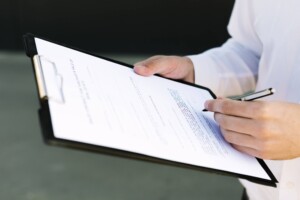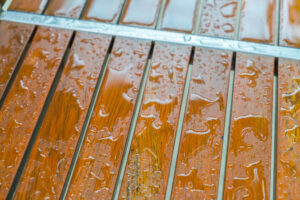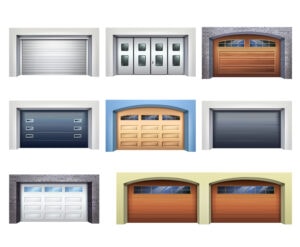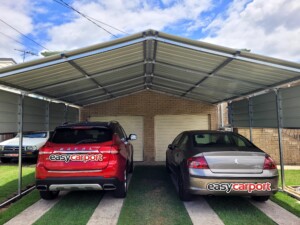How Do Metal Carports Handle Extreme Weather?
Metal carports are popular shelter options for vehicles, outdoor equipment, and recreational items, offering durability, low maintenance, and resistance to various weather conditions. Common materials used for metal carports include steel and aluminum, each with its unique properties and benefits that contribute to the structure’s overall performance and longevity.
As climate change continues to cause increasingly severe and unpredictable weather events, understanding the extreme weather resistance of metal carports is essential for homeowners looking to invest in a durable and reliable shelter solution. This analysis will provide insights into the performance of metal carports in extreme weather conditions, including wind, snow, hail, and their ability to resist corrosion and rust.

Table of Contents
Metal Carport Materials and Extreme Weather
By considering the specific material properties and quantitative performance metrics, homeowners can make an informed decision on the most suitable metal carport material to withstand extreme weather conditions in their region.
Steel
Strength and durability: Steel is renowned for its strength and durability, making it a popular choice for metal carports. Structural steel typically has a yield strength ranging from 36,000 to 50,000 psi (250 to 345 MPa), allowing it to withstand heavy loads and resist deformation.
Resistance to extreme weather conditions: Steel carports can be designed to withstand wind speeds up to 150 mph (240 km/h) and support snow loads ranging from 20 to 60 pounds per square foot (psf), depending on the local building codes and specific engineering requirements. Their structural rigidity and ability to distribute loads evenly contribute to their resilience in extreme environments.
Aluminum
Lightweight properties: Aluminum is a lightweight material often used for metal carports due to its ease of installation and transportation. Structural aluminum has a tensile strength ranging from 13,000 to 60,000 psi (90 to 414 MPa), depending on the alloy and temper, and its lower weight reduces the overall load on the structure.
Performance in extreme weather conditions: Aluminum carports can be designed to withstand wind speeds up to 100 mph (160 km/h) and support snow loads ranging from 10 to 40 psf, depending on the local building codes and structural design. Although aluminum has a lower strength-to-weight ratio than steel, its natural resistance to corrosion makes it a suitable option for moderate wind and snow load requirements
Wind Resistance
Aerodynamic design considerations
- Roof shape: The roof shape of a metal carport plays a crucial role in wind resistance. Sloped or curved roofs can help reduce wind pressure on the structure by allowing air to flow over the surface more smoothly, reducing the risk of damage during high-wind events.
- Open vs. enclosed carports: Open carports, with fewer walls or partially enclosed sides, are less likely to experience wind uplift compared to fully enclosed structures, as they allow wind to pass through the structure with minimal resistance.
Proper anchoring and bracing
- Foundation and anchoring: Ensuring a strong foundation and proper anchoring is vital for the stability of a metal carport during high-wind events. Options for anchoring include concrete footings, ground anchors, and mobile home anchors, which should be selected based on the local soil conditions and wind load requirements.
- Bracing and reinforcements: Bracing systems, such as cross-bracing or portal bracing, can be used to strengthen the metal carport’s frame and increase its resistance to lateral wind forces, reducing the risk of structural failure during extreme wind events.
C. Wind ratings and building codes
- Local wind ratings: It is essential to consider the local wind ratings and design the metal carport accordingly to ensure its resilience against extreme wind conditions. The wind ratings take into account factors such as geographical location, terrain, and nearby structures, which can influence wind patterns and intensity.
- Compliance with building codes: Adhering to local building codes and industry standards is crucial for the safe and secure construction of a metal carport. Compliance with these codes ensures that the carport is designed and installed to withstand the specific wind loads and environmental conditions of the region.
Snow Load Capacity
Roof design and slope
- Pitched roofs: A steeply pitched roof can help to reduce snow accumulation on a metal carport by encouraging snow to slide off the structure. This minimizes the stress on the frame and reduces the risk of structural failure due to heavy snow loads.
- Curved roofs: Similar to pitched roofs, curved roof designs can help to distribute snow loads more evenly across the structure and promote snow shedding, decreasing the likelihood of damage during heavy snowfall events.
Structural reinforcement
- Roof purlins: Installing additional roof purlins, which are horizontal beams that support the roof panels, can increase the snow load capacity of a metal carport by providing extra support to the roof structure.
- Trusses and bracing: Utilizing roof trusses and bracing systems can help to strengthen the carport’s frame and distribute snow loads more evenly, reducing the risk of structural failure under heavy snow loads.
Snow load ratings and building codes
- Local snow load ratings: Understanding the local snow load ratings is crucial for designing a metal carport capable of withstanding heavy snowfall. Snow load ratings consider factors such as snowfall frequency, snow density, and regional climate, helping to determine the appropriate structural requirements for a carport in a specific area.
- Compliance with building codes: Adhering to local building codes and industry standards ensures that a metal carport is designed and installed to handle the specific snow loads and environmental conditions of the region. Compliance with these codes minimizes the risk of structural failure and increases the overall safety and durability of the carport.
Resistance to Hail and Impact Damage
Material thickness and gauge
- Steel thickness: The thickness of steel used in carport construction affects its resistance to hail and impact damage. Thicker steel gauges, such as 12 or 14 gauge, offer increased durability and impact resistance compared to thinner gauges like 29 gauge.
- Aluminum thickness: Aluminum carports can also be designed with varying material thicknesses to improve their resistance to hail and impact damage. Thicker aluminum panels provide better protection against dents and punctures caused by hailstones or falling debris.
Protective coatings and finishes
- Galvanized steel: Galvanized steel carports have a protective zinc coating that provides increased resistance to corrosion, which can result from hail damage or moisture exposure. This added protection helps maintain the structural integrity of the carport during extreme weather events.
- Powder coating: Applying a powder coating to metal carport panels creates a durable, corrosion-resistant, and attractive finish that can help protect the structure from hail damage and other impacts. This coating is available in a wide range of colors, allowing for customization and added protection.
Repair and maintenance considerations
- Inspecting for damage: Regularly inspecting the metal carport for signs of hail or impact damage, such as dents, scratches, or punctures, is essential for maintaining the structure’s integrity and preventing further deterioration.
- Repairing damaged panels: In the event of hail or impact damage, prompt repairs or replacements of damaged panels can help prevent the spread of corrosion and maintain the carport’s structural integrity. Proper maintenance and timely repairs can extend the lifespan of the metal carport and ensure its continued performance during extreme weather conditions.
Protection Against Corrosion and Rust
Galvanized steel
- Zinc coating: Galvanized steel carports feature a protective zinc coating that offers enhanced resistance to corrosion and rust. This coating forms a barrier between the steel and the environment, preventing moisture and other corrosive elements from damaging the metal.
- Periodic inspections: Regularly inspecting galvanized steel carports for signs of corrosion or rust can help identify potential issues early and ensure prompt maintenance or repairs, if necessary, to maintain the structure’s durability and longevity.
Aluminum and corrosion resistance
- Natural oxide layer: Aluminum carports naturally form an oxide layer on their surface, which provides a barrier against corrosion and rust. This layer makes aluminum carports inherently resistant to corrosion, even in harsh environments or when exposed to moisture and other corrosive elements.
- Anodizing: Anodizing is a process that further enhances the corrosion resistance of aluminum carports by increasing the thickness of the natural oxide layer on the surface. This treatment can provide additional protection against environmental factors that may cause corrosion or rust.
Regular maintenance and inspection
- Cleaning and debris removal: Periodic cleaning and removal of debris from the metal carport’s surface can help prevent the buildup of dirt, leaves, and other materials that may contribute to corrosion or rust formation. Keeping the carport clean and well-maintained is essential for its long-term durability and performance.
- Addressing damaged areas: If any signs of corrosion or rust are detected during inspections, addressing the damaged areas promptly through cleaning, repair, or replacement can help prevent further deterioration and ensure the continued protection of the metal carport against extreme weather conditions.
Conclusion
Metal carports, constructed from steel or aluminum, provide durable and reliable shelter solutions that can withstand various extreme weather conditions. The performance of these structures in high winds, heavy snow, hail, and corrosion resistance depends on factors such as material properties, structural design, protective coatings, and proper maintenance. By considering the quantitative performance metrics and adhering to local building codes, homeowners can make informed decisions when selecting the most suitable metal carport material for their specific region and environmental conditions.

Do I Need Permit To Build Carport In Australia
The Answer is Often Yes. A carport is a great way to protect your car from the elements. In many

Do Metal Carports Sweat? How to Prevent Condensation
Metal carports are popular choices for protecting vehicles and providing additional storage space. However, one concern that arises with metal

What Is The Cheapest Type Of Garage To Build?
A garage is a fully enclosed structure designed to provide shelter, security, and protection for vehicles, tools, and other belongings.

How Do Metal Carports Handle Extreme Weather?
Metal carports are popular shelter options for vehicles, outdoor equipment, and recreational items, offering durability, low maintenance, and resistance to

Why Choose Metal Carports Over Wood?
Carports are essential structures designed to protect vehicles from the elements and other potential hazards. In the United States, there


1 Comment
Comments are closed.